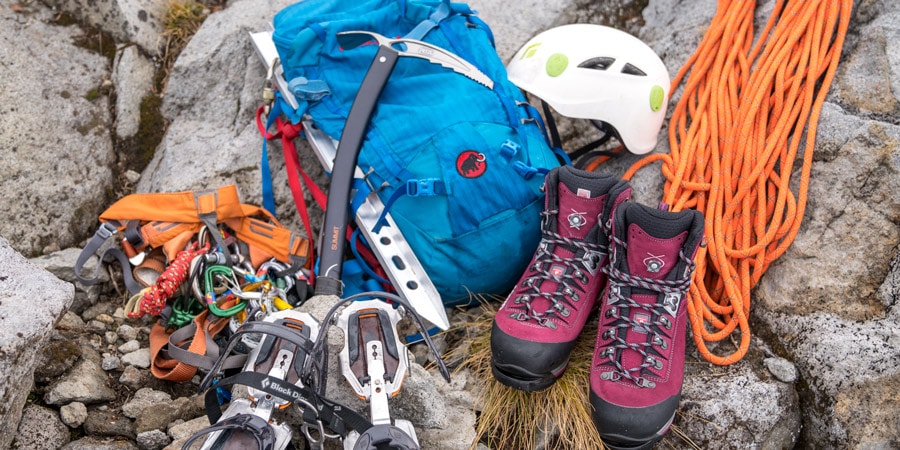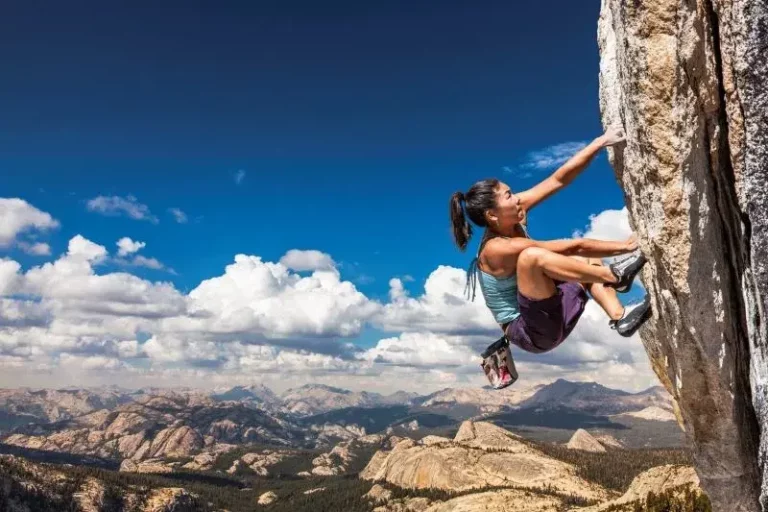Your Vertical Arsenal: The Top 12 Rock Climbing Gear Items for Any Aspiring Climber
More than just a desire for adventure is needed to embark on the thrilling adventure of rock climbing; you also need the proper equipment to guarantee safety, improve performance, and eventually enable you to completely immerse yourself in the vertical world. Beginners may find the variety of climbing equipment intimidating, but a basic set of gear is definitely necessary. Let’s Trek It outlines the top 12 items of rock climbing gear that any prospective climber should know how to use and buy before venturing out onto the rock, whether indoors or out.
I. The Foundation of Safety and Connection:
- Climbing Rope: The lifeline of any roped climbing activity. Dynamic ropes are specifically designed to stretch and absorb the energy of a fall. Choosing the right length and diameter depends on the type of climbing you’ll be doing. For sport climbing, a 60m rope is common, while trad and multi-pitch might require longer ropes. Key takeaway: Dynamic, appropriate length and diameter, UIAA certified.
- Climbing Harness: A secure and comfortable harness is crucial for attaching yourself to the rope and distributing the force of a fall. It consists of a waist belt and leg loops. Proper fit is paramount – it should sit snugly above your hip bones and allow for a full range of motion without being restrictive. Key takeaway: Proper fit, comfortable, UIAA certified.
- Belay Device: This mechanical device is used by the belayer to control the rope and arrest a climber’s fall. There are various types, including tube-style devices (like the ATC) and assisted-braking devices (like the GriGri). Learning to use your belay device correctly and safely is absolutely fundamental. Key takeaway: Appropriate for rope diameter, user proficiency, UIAA certified.
- Locking Carabiners: These are carabiners with a locking mechanism (screw-gate, twist-lock, auto-lock) that prevents accidental opening. They are essential for critical connections in the belay system, attaching the belay device to the harness, and building anchors. Key takeaway: Strong, reliable locking mechanism, UIAA certified.
II. Enabling Movement and Protection:
- Climbing Shoes: Specialized footwear designed to provide friction and support on small holds. They come in various shapes (neutral, moderate, aggressive) and stiffness levels to suit different climbing styles and foot shapes. A snug fit is important for performance, but they shouldn’t be excessively painful, especially for beginners. Key takeaway: Snug fit, appropriate shape for climbing style, good rubber.
- Quickdraws: These are pre-assembled units consisting of two non-locking carabiners connected by a sling. In lead climbing (both indoors and sport outdoors), quickdraws are clipped to bolts on the wall, and the rope is then clipped into the lower carabiner, providing running protection in case of a fall. Key takeaway: Strong, smooth clipping action, appropriate length for the route.
- Climbing Helmet: Protecting your head from falling rocks or impacts during a fall is non-negotiable, especially when climbing outdoors. Choose a helmet specifically designed for climbing that meets safety standards and fits comfortably. Key takeaway: Lightweight, good ventilation, meets safety standards (UIAA/CE).
- Chalk Bag and Chalk: Chalk absorbs sweat from your hands, improving grip on the rock. A chalk bag worn around your waist keeps chalk readily accessible during your climb. Key takeaway: Effectively holds chalk, comfortable to wear.
III. Expanding Your Capabilities (Especially for Outdoor Climbing):
- Slings (Runners): These are sewn loops of webbing used for various purposes, including extending protection placements in trad climbing, building anchors, and equalizing loads. They come in different lengths. Key takeaway: Strong, durable, appropriate lengths for intended use.
- Trad Climbing Protection (Nuts and Cams): For traditional climbing, these are essential for creating your own protection points in cracks and constrictions in the rock.
- Nuts (or Stoppers): Passive protection devices that are wedged into constrictions in the rock.
- Cams (Spring-Loaded Camming Devices – SLCDs): Active protection devices with spring-loaded lobes that expand to fit parallel-sided cracks.
- Key takeaway: Variety of sizes, proper placement technique is crucial.
- Nut Tool: A specialized tool used to remove nuts that become stuck in the rock after a fall or when cleaning a route. Essential for trad climbing. Key takeaway: Durable, effective for removing stuck protection.
- Personal Anchor System (PAS) or Daisy Chain: Used for safely attaching yourself to an anchor point at the top of a climb or during multi-pitch climbing. A PAS is generally preferred over a traditional daisy chain due to its continuous loop construction. Key takeaway: Safe and reliable connection to anchors.
IV. Beyond the Basics (Important Considerations):
While these 12 items form the core of your climbing equipment, remember that other gear plays a vital role in a complete and safe climbing experience. This includes:
- Approach Shoes: Sturdy footwear for hiking to and from climbing areas.
- Headlamp: Essential for navigating in low light conditions, especially if your climb extends into the evening.
- First-Aid Kit: For treating minor injuries.
- Multi-tool or Knife: Useful for various tasks.
- Guidebook or Route Information: Crucial for navigating climbing areas and understanding route details.
- Water and Snacks: Staying hydrated and fueled is essential for performance and safety.
- Sunscreen and Sunglasses: Protecting yourself from the elements.
V. Investing Wisely and Prioritizing Safety:
When purchasing climbing equipment, prioritize safety and quality over price. Always buy from reputable manufacturers and ensure that your gear meets recognized safety standards (UIAA and/or CE). Learn how to use each piece of equipment correctly through professional instruction and practice. Regularly inspect your gear for wear and tear, and retire any items that show signs of damage.
Embarking on your rock climbing journey with the right equipment is the first step towards countless rewarding ascents. Let’s Trek It encourages you to invest in these essential pieces, learn how to use them proficiently, and always prioritize safety as you explore the incredible vertical world. Happy climbing!



